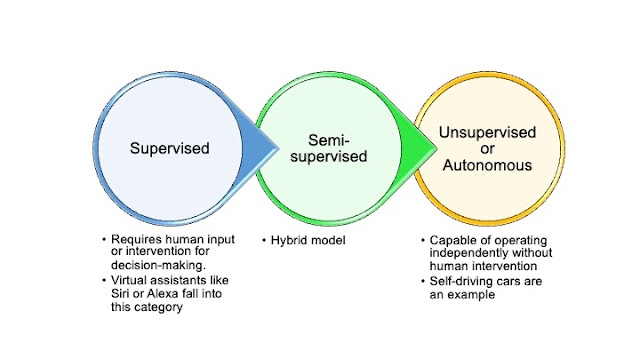 |
|
Image credit: Antoni Shkraba/Pexels |
By Lilian H. Hill
Visual content in social media and networks has become more important with the emphasis on storytelling using pictures. One reason is that the human brain processes visual images 60,000 times more quickly than written text. Visuals capture our attention and can lend clarity to written text. Additionally,
- On average, people spend more than 2 hours on social media daily, and during the COVID pandemic quarantine that time increased (Hernandez, 2021).
- 63% of social media is made up of images.
- Nearly half of all Internet users have reposted a photo or video they have found online.
- 54% of Internet users have posted an original photo or video that they personally have created.
- Content with relevant images gets 94% more views than content without (Lee, 2014).
There are many types of visuals you can choose to use or create including creative photography, video, screenshots, infographics, data visualization (charts and graphs), comics, memes, visual note-taking, and miscellaneous graphics (Lee, 2014). Additionally, PowerPoint and Prezi are commonly used to make presentations.
Marketing researchers have identified that what captures viewers’ attention best are visuals with low cognitive demand and high clarity, meaning that they can be quickly understood (Hernandez, 2021).
Therefore, we provide some brief guidelines to help readers become more effective in the visual images that they select, curate, and create.
____________________________________________________________________________
Use faces in your visuals.
People have evolved to pay attention to human faces and what they are looking at (Hernandez, 2021).
Keep visual content clean.
If your visual image is too complex or cluttered, it will increase cognitive demand and reduce clarity (Hernandez, 2021).
Create a center of attention.
Usually, viewers will focus on the front and center of the visual image. This is where you want to place the most important visually idea (Hernandez, 2021).
Use high-quality graphics.
Resolution matters. Low-resolution images will look fuzzy, especially if you are projecting your visuals.
Copyright also matters. It is tempting to copy images from the internet but can get you in legal trouble.
Some sources provide high-resolution images that are no- or low-cost and copyright-free. You can begin with clip art provided with Microsoft products. Other sources include Flickr, Pexels, Unsplash, and Getty Images (Lee, 2014).
Use visual image-creation tools.
These tools can help create effective visuals and are particularly useful for people without a graphic design background.
Many people get good results using Presentation software such as PowerPoint.
Canva, Remix, and Easel.ly are just a few examples (Lee, 2022).
The following example was created in Canva using an Infographic Template.
Visuals should relate to the point(s) you are making.
There are times when a picture really is worth 1000 words. However, remember that the purpose of visuals is to reinforce and augment your message, not to distract from it.
Reduce the amount of written text.
If you have more text than can be comfortably fit on a page or slide in a reasonable point size, either divide it into a series of slides or convert the information to a handout.
If you copy a chart or something similar, increase the size of the image so that it can be clearly seen, especially if you plan on projecting your visual image.
Use a minimum of 18 pt. type. Between 24 and 48 is even better.
Look at your visuals from a distance to be sure the information can be clearly seen. For images such as chemical structures, it is crucial that fine details can be seen.
Choose fonts carefully.
Sans-serif fonts are often easier to read than serif fonts.
Too many different fonts in a slide or a presentation can be distracting, so use no more than two fonts per page, and avoid fonts that are not easily understood such as Baquet Script or Curlz MT.
The use of color is helpful.
Be judicious in your choice of colors. Too many colors can be distracting.
There must be sufficient difference between the background color and the print or image. For example, red type of white background does not provide enough contrast and neither does pale blue on a dark blue background work well.
Think carefully about color symbolism, the subjective meaning humans attach to various colors. Try to avoid colors and color combinations that might offend people.
Remember the needs of students who are color blind.
There are many different types and degrees of colorblindness, instead, they are "color deficiencies" since few people are unable to perceive at least some colors.
For some color deficient individuals, the names red, orange, yellow, and green are simply different names for the same color. The same can be true for violet, lavender, purple, and blue.
Among the colors most often confused are pink/gray, orange/red, white/green, green/brown, blue green/gray, green/yellow, brown/maroon, and beige/green. Pastels and muted tones are also difficult to distinguish.
Do use some white space.
A visual or a page that is too crowded can overwhelm, confuse, and discourage the reader.
References
Hernandez, S. (2021, October 25). How to get the most visual attention on your content. Retrieved https://www.socialmediatoday.com/spons/how-to-get-the-most-visual-attention-on-your-content/608678/
Lee, K. (2014, May 27). A complete guide to visual content: The science, tools and strategy of creating killer images. Retrieved https://buffer.com/resources/a-complete-guide-to-creating-awesome-visual-content/
Lee, K. (2021, October 31). 22 tools and resources to create images for social media. Retrieved https://buffer.com/library/tools-create-images-for-social-media/
Trafton, A. (2014, January 16). In the blink of an eye: MIT neuroscientists find the brain can identify images seen for as little as 13 milliseconds. MIT News, Retrieved https://news.mit.edu/2014/in-the-blink-of-an-eye-0116














